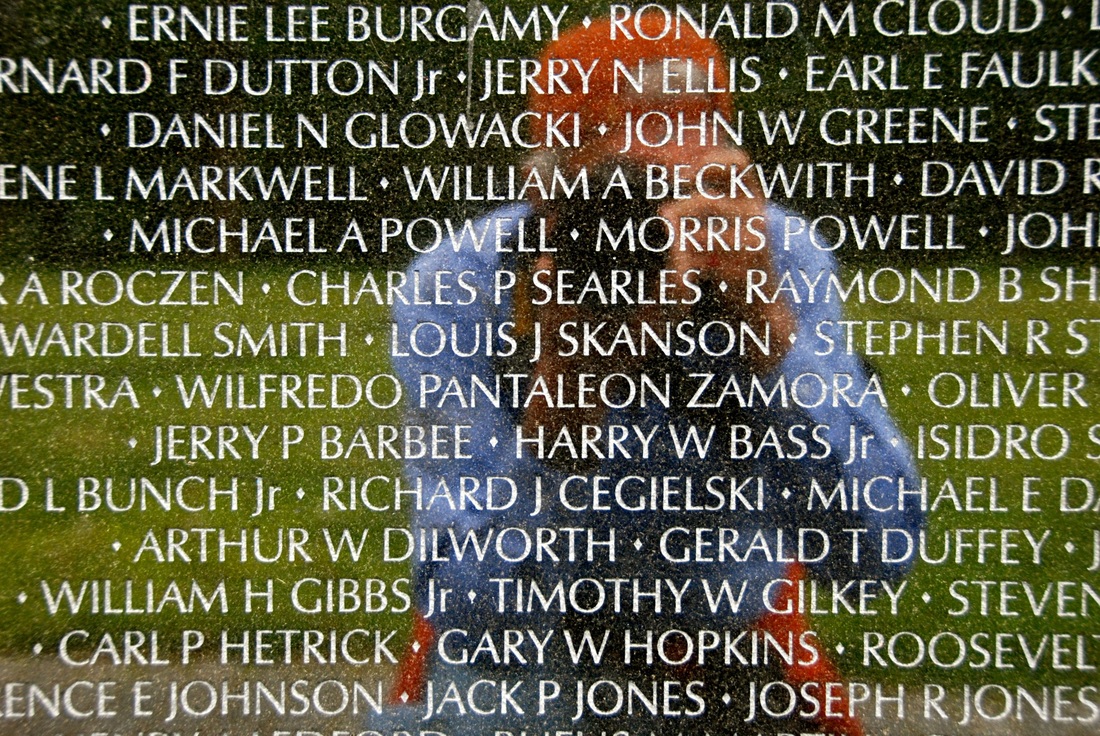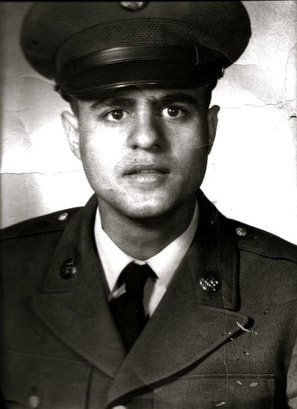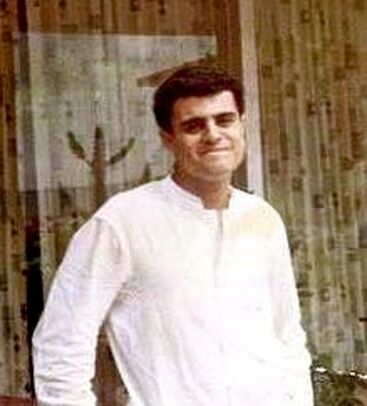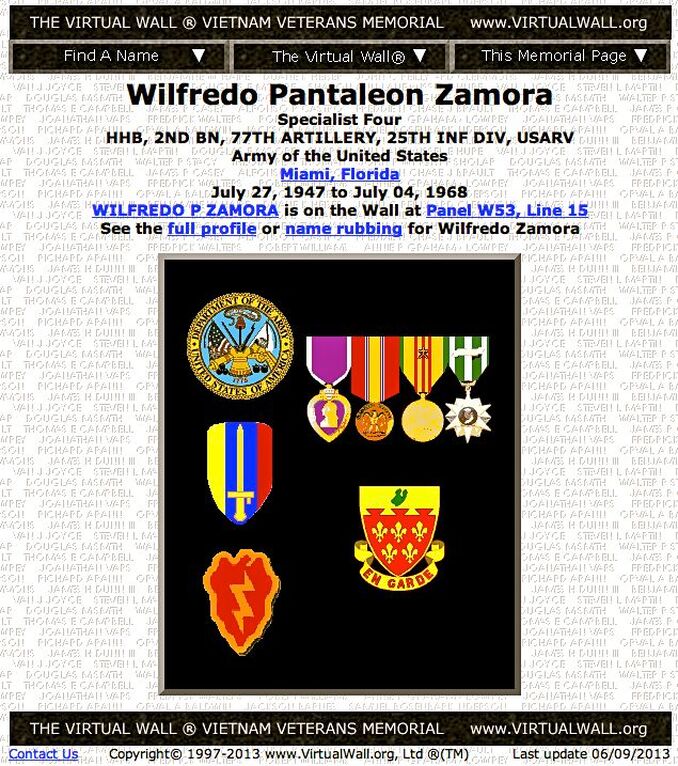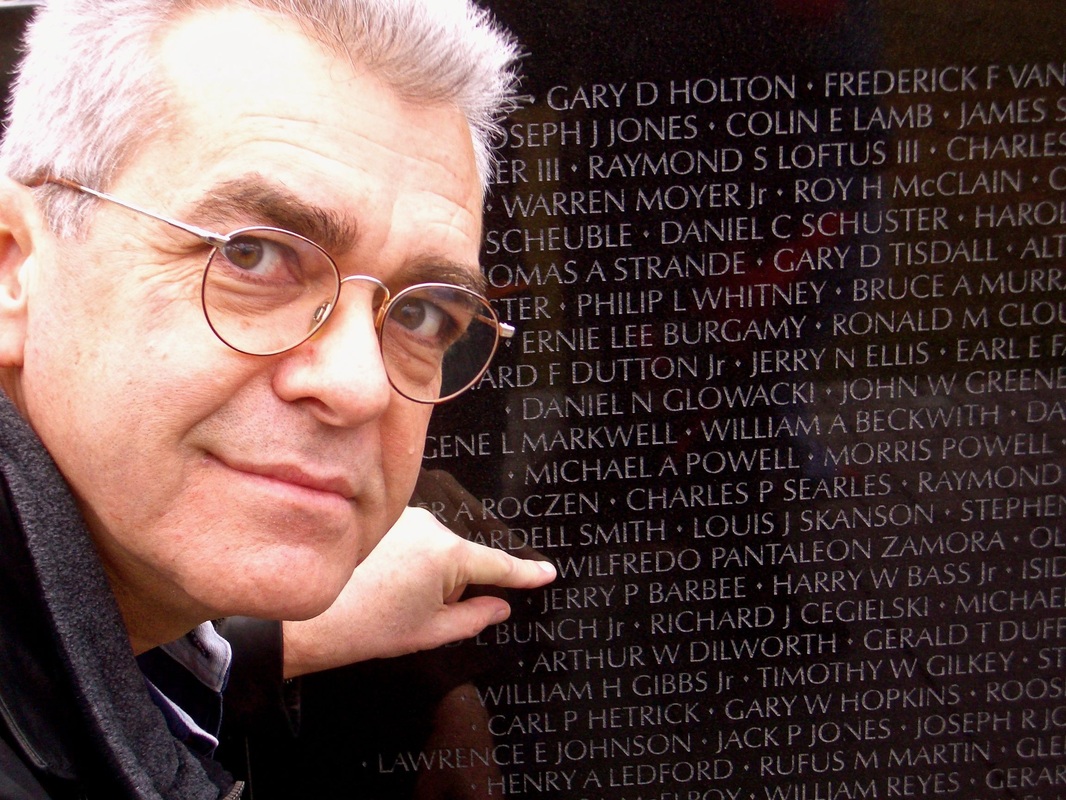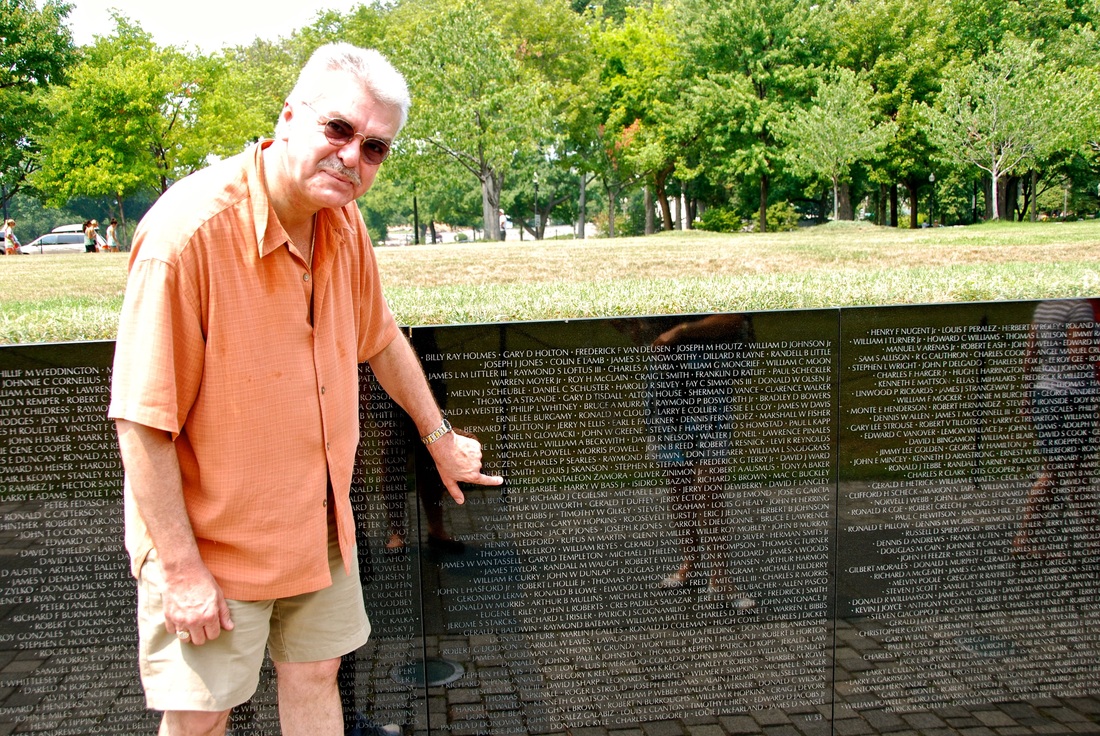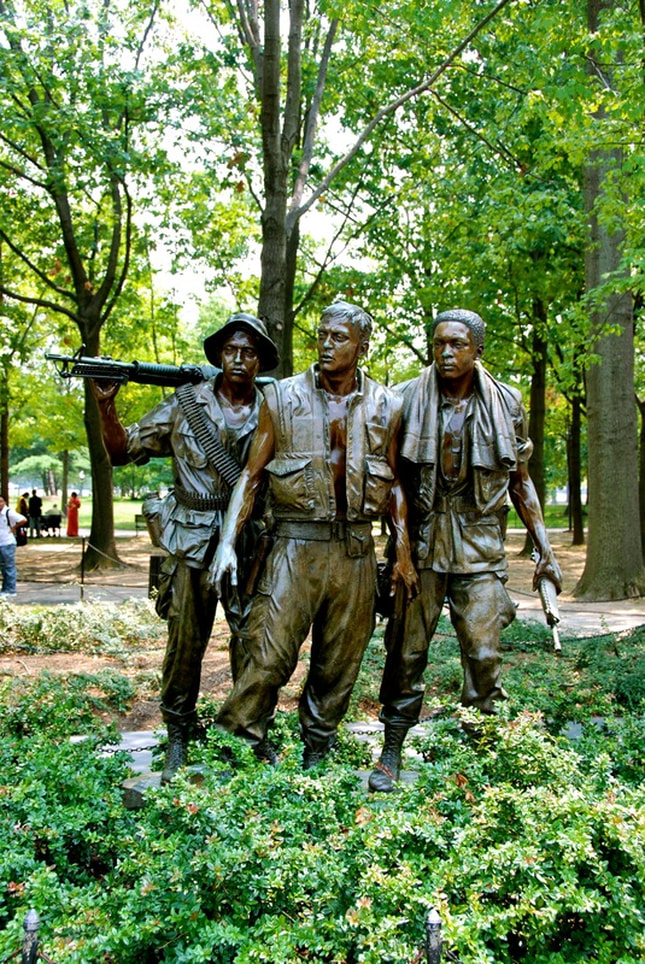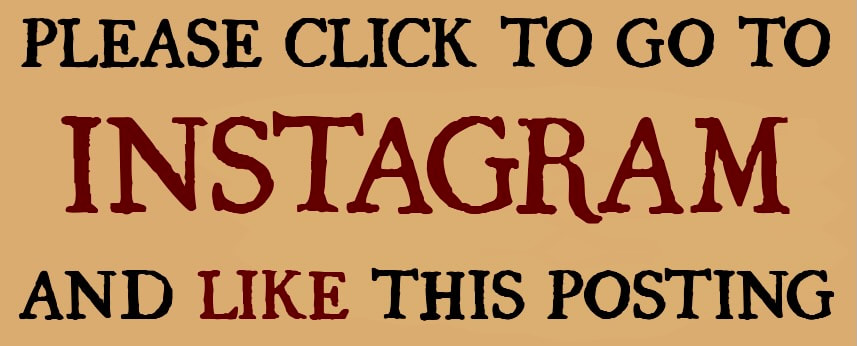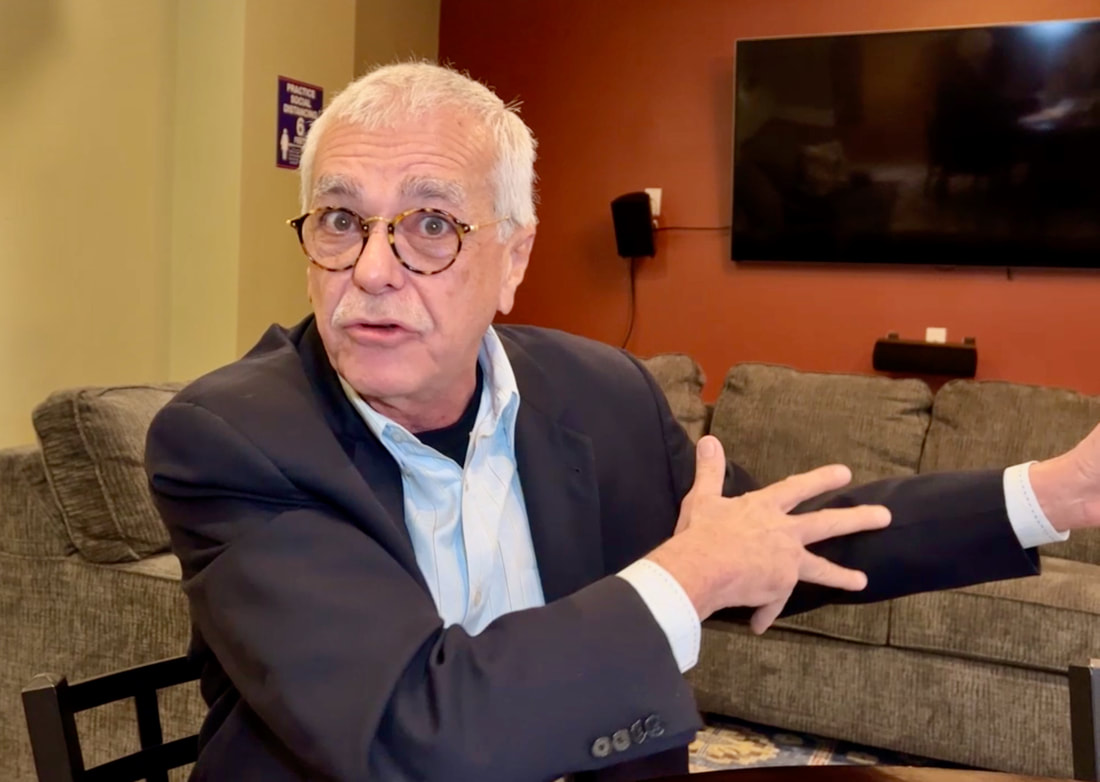35. Thinking of Cusi on the Fourth of July
|
By Miguel Pérez
July 7, 2004 - Every Fourth of July, as others are watching the fireworks, my mind wonders back to the jungles of Vietnam in 1968. I wasn’t there. But I try to imagine how my friend Cusi must have spent that night, and it serves to remind me of the real meaning of the Fourth of July. His name was Wilfredo Zamora, but as we grew up together in Miami’s “Little Havana” everyone new him by his nickname. Among our group of friends, Cusi was the first to be drafted into the Army. He was not even an American citizen yet, but as a Cuban refugee and a legal U.S. resident, he was subject to the draft just the same. Cusi didn’t seem to mind. He was more than willing to defend his adoptive homeland. No doubt he would have preferred to go fight for Cuba’s freedom, but as long as he was going to be fighting communists, he felt he would be serving the same cause. If he had been in college, Cusi could have deferred his Army recruitment. But after high school, Cusi had opted to go to work in is father’s shoe repair shop in Little Havana. Instead, he ended up in Tay Ninh, South Vietnam, where he was killed on July 4, 1968. Only a year after joining the Army and less than four months after arriving in Vietnam, Cusi was sent home in a box draped by an American flag. He was 20 years old. His death was described as a “hostile, ground casualty” with “multiple fragmentation wounds.” In other words, he was chopped to pieces fighting for our freedom. And that’s the image that creeps into my mind as others watch the holiday fireworks. It makes me appreciate the sacrifices our soldiers have made throughout history to defend our freedom – and it makes me proud that countless Latinos, like my friend Cusi, have made tremendous contributions in defense of this great nation. Unfortunately, this is a story that has gone largely untold, an unwritten chapter of American history that, by its absence, has perpetuated an unjust, negative image of America’s immigrants. Its invisibility has given strength to the forces of xenophobia that are now trying to make America turn its back on its precious tradition as a nation of immigrants. Yet Latinos take great pride in their history of military contributions dating back to the American Revolution. That's when Bernardo de Galvez, the Spanish governor of Louisiana, provided guns and ammunition to George Washington's troops, and when Spain entered the war on the side of the Americans in 1779. Since then, Latinos have done more than their share of fighting for this country. They have served in every U.S. war in greater proportion than their percentage of the population. They may be underrepresented in politics, colleges, and corporations, but in fields of combat, Latinos have been over-represented. They have earned 40 Medals of Honor, the nation's highest military decoration - more than any other ethnic group, in proportion to the number who served. Historians say more than 10,000 Latinos fought in the Civil War, and that thousands died in the two world wars and Korea. In Vietnam, Latinos suffered in casualties in much larger proportion than their U.S. population. Currently, although Latinos represent 13 percent of the U.S. population, they are slightly underrepresented in the military, with 10 percent of all American soldiers on active duty. However, they are over-represented in some states with large Latino populations – and that’s because, like Cusi, many of them are not even American citizens. As of April 2002, there were 31,044 legal resident immigrants from all over the world on active duty, or just over 2 percent of the total force of 1,396,238. They cannot vote for the president who sends them into battle, but they can fight and die – as Cusi did -- for the nation where they live. That’s why the thought of Cusi keeps coming back to me quite often nowadays. When immigrant bashers pick even on legal immigrants who have yet to become U.S. citizens, when politicians try to take their benefits away or enforce English-only rules, I think of Cusi. After all, when he was sent off to war, no one seemed to care whether he was a citizen or spoke English. Some Americans may not recognize it, but many green-card-carrying immigrants have made the ultimate sacrifice – dying in battle before even becoming American citizens - so that we can continue to celebrate our Fourths of July. |
En español
|

